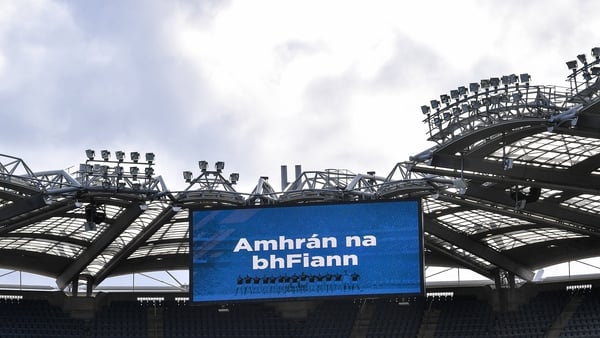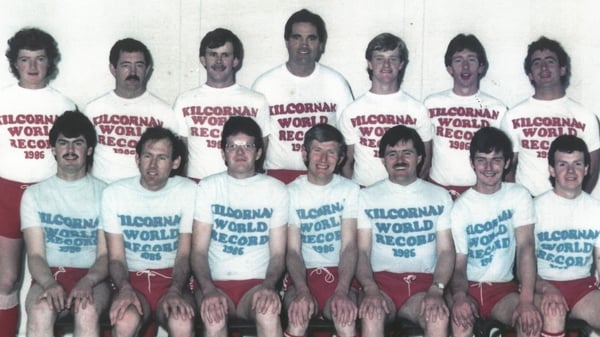Analysis: The Games were 'the greatest sporting carnival ever organised in Ireland', but the spectacle and glamour turned out to be short lived
In 1924, the ancient Tailteann Games from thousands of years ago were re-established in modern form. Taking place in the shadow of the Irish Civil War, the competitions brought participants from all over the world to converge in Dublin for Ireland's answer to the Olympic Games. On three occasions, hundreds of athletes, artists, writers and musicians participated in this mass celebration of Irish culture and sport. But the spectacle and glamour of the Tailteann Games was short lived. This is the story of 'the greatest sporting carnival ever organised in Ireland'.
The Tailteann Games, also known as Aonach Tailteann, was a festival held at Tara, Co Meath from 632BC until the last record of the event in 1168AD —just before the ‘English invasion’ of 1169. Held in honour of Queen Tailte, the games combined sporting competitions with cultural contests in poetry, music and dancing. The programme of events took place over the course of approximately one week and they pre-dated the ancient Olympic Games by 100 years.
We need your consent to load this YouTube contentWe use YouTube to manage extra content that can set cookies on your device and collect data about your activity. Please review their details and accept them to load the content.Manage Preferences
From British Pathé, coverage from the 1924 Tailteann Games
The modern Tailteann Games took place in the aftermath of a bloody civil war that had resulted in thousands of deaths and the destruction of the Irish infrastructure. While the Free State was not yet a Republic, they wanted to demonstrate that they were culturally independent and hosting a massive sporting and cultural event was an ideal way of projecting that. One of the first decisions made by the new Free State government was to stage the Tailteann Games and, ultimately, to give £10,000 to the GAA to renovate Croke Park to stage the opening and closing ceremonies.
But support for the Tailteann Games was not universal. In advance of the first games in August 1924, Sinn Féin, led by Éamon De Valera, published a pamphlet pleading with the public ‘not to give any aid or encouragement or to promote or participate in the games or festivals’ as ‘the true aspirations for complete independence have not been met’. The party had particular concerns over the Irish diaspora travelling from abroad and ‘not seeing the Motherland as we would wish her to be seen’. Despite these calls and a formal boycott of all events by Sinn Féin, the games proceeded in front of large attendances.
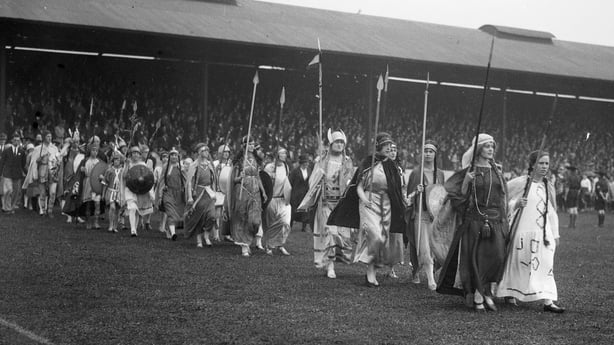
The Tailteann Games were part of a phase between the 1890s and the 1930s where mega-events became an integral part of Western modernity. The increase in the number of new large-scale international events such as World Fairs in the late 19th century, the Olympic Games in 1896 and soccer World Cup in 1930 were tied to ideas of progress and growth. These mega-events reflected the quest for technological and industrial progress and early mass media in the form of newspapers and radio coupled those events with the emergence of an increasingly global and mobile society.
However, there was also competition between nation-states when it came to these events and the Tailteann Games was no different. The principle of the Tailteann Games were of international integration yet there was a deliberate demarcation from certain sports. For this reason, the programme did not include cricket, soccer or rugby, which were viewed as traditionally British pastimes.
We need your consent to load this YouTube contentWe use YouTube to manage extra content that can set cookies on your device and collect data about your activity. Please review their details and accept them to load the content.Manage Preferences
From British Pathé, preparations in full swing for the Tailteann Games in 1932
The crossovers with the Olympic Games were obvious and deliberate. Organisers of the event even timed the Tailteann Games so that they coincided with athletes travelling overseas for the Summer Olympics. The 1924 Olympics in Paris and the 1928 Olympics in Amsterdam made attending the Tailteann Games in Ireland reasonably attainable for a large number of people and 24 medal winners from the Paris Olympics competed in the inaugural Tailteann Games. This development turned the Tailteann Games into a major tourist attraction and a vehicle to shape an image of Ireland as the host country, which assured 'the hospitality of the Irish people' for ‘sportsman and sightseer alike’.
In order to take part in the games, participants were supposed to be either of Irish birth or Irish heritage. However, this rule was flexible and organiser JJ Walsh invited famous athletes in order to attract large attendances. These notable athletes included Johnny Weissmuller (a swimmer who later became famous as the actor who played Tarzan), Harold Osborn (US long jumper) and well known artists such as Seán Keating and Margaret Clarke. Teams came from England, Scotland, Wales, the US and other countries with Irish emigrant communities including New Zealand, South Africa, Australia and Argentina.
From TG4, Aonach Tailteann documentary on the Tailteann Games (first broadcast 2006)
In 1924, there were 6,500 competitors across 20 different categories. The 1928 games saw over 30 categories including handball, camogie, chess, motor boat racing, architecture and dancing. There was a full complement of Gaelic Games tournaments for men and women. The entire city was utilised with swimming in the Phoenix Park, rowing in Islandbridge, chess competitions in Trinity College, yachting competitions in Dun Laoghaire and boxing in Portabello.
An art competition took place in the RDS, where most of the major Irish painters and sculptors of the period competed, and a series of dramas were staged in the Abbey Theatre. There was a marathon from Navan to Croke Park, which is where most of the athletics competitions took place. The opening ceremonies also took place in Croke Park and it remained the focal point for the entirety of the games. The opening ceremonies kept with the style of the modern Olympics and paraded the athletes from all the competing nations along with music, pageantry and elaborate fireworks displays.
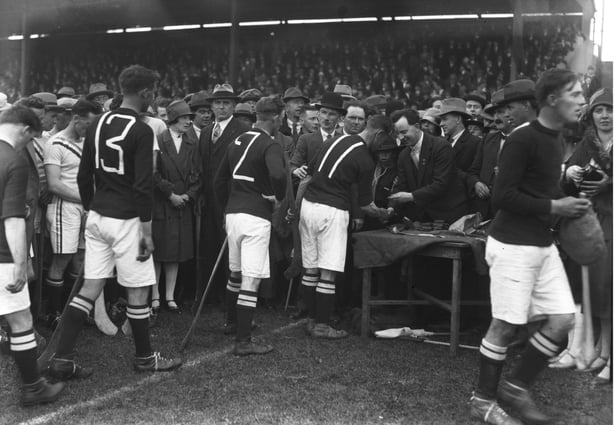
The press labelled the games the return of the Gael. The Irish Times lauded the Games as 'an enormous success full of brilliant performances which have given a tremendous impetus to Ireland and to Irish sport'. They also concluded that the games were 'the most important psychological moment in the history of the Irish Free State'.
Victorious athletes received medals, which were designed by Oliver Sheppard. Medals were relatively easy to win as there were over 1,000 up for grabs. In 1928, famous tenor John McCormack donated a silver trophy for the vocal solo competition. The trophy, which is now in the collection of the National Museum of Ireland, is elaborate in its craftsmanship and would have cost a considerable amount of money for McCormack to commission and to have especially engraved. However, there were to be only two winners of the trophy - Donncad MacCoilig and Eleanor Sterling - as the Tailteann Games would wrap up after the 1932 iteration.
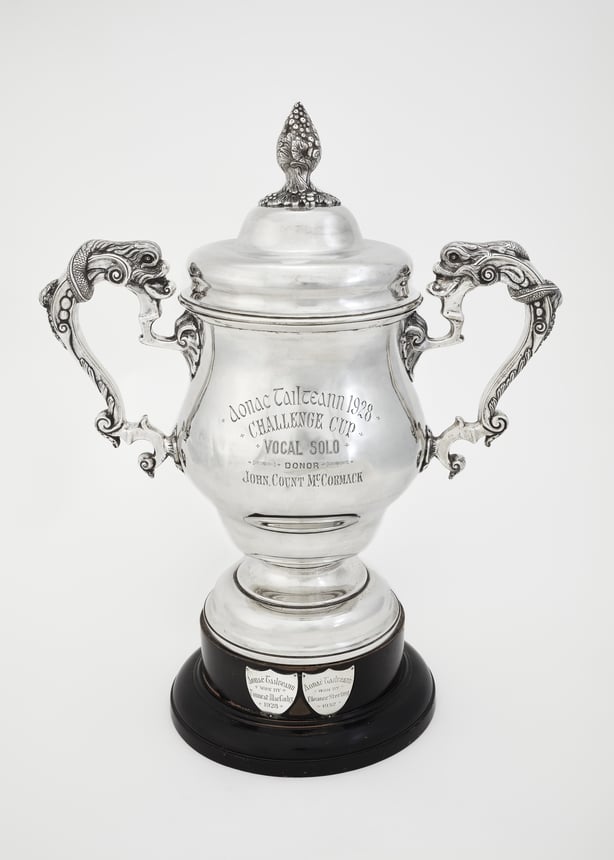
1932 was when the event lost its power and prestige, particularly its international dimension. The summer Olympic Games that year were held in Los Angeles so most athletes were on the long journey across the Atlantic Ocean and a stop off in Dublin was less convenient this time around. This resulted in a less competitive and compelling event for spectators. The city had just held the Eucharistic Congress a week beforehand so many people may have been suffering from mega-event fatigue by the time the Tailteann Games came around.
The Tailteann Games also left a deficit in funding, which had to be settled by the central government. They were due to be held again in 1936, but a major internal dispute had left Irish athletics in disarray. The glory, excitement and fascination of previous years had well and truly departed.
All told, the staging of the Games was a remarkable achievement in the context of a new state and it brought positive international attention to the Irish Free State. More women took part in the Tailteann Games than the Olympic Games and it succeeded in its attempt to promote Irish pastimes, industries and culture. It also brought much-needed tourism in the aftermath of the Irish Civil War. The Tailteann Games cemented a link between ancient and modern Ireland and in doing so, a new chapter in history was created.
The New State, Ancient Nation: The Tailteann Games seminar takes place at the National Museum of Ireland Collins Barracks on Friday May 10th
Follow RTÉ Brainstorm on WhatsApp and Instagram for more stories and updates
The views expressed here are those of the author and do not represent or reflect the views of RTÉ



